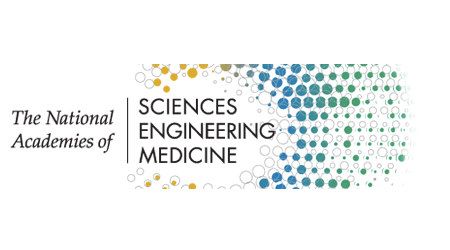National Academies Report: Marking Progress of National Action Plan against Antimicrobial Resistance
The report assesses progress of a US national action plan to combat antimicrobial resistance, called for by 2015 World Health Assembly.

The US Centers for Disease control and Prevention (CDC) is struggling to measure the magnitude of the problem of antimicrobial resistance, according to some measures of progress of the 2015 National Action Plan for Combating Antibiotic-Resistant Bacteria, described in a new National Academies report.
The report was prepared by the Committee on Examining the Long-Term Health and Economic Effects of Antimicrobial Resistance, sponsored by the National Institute of Allergy and Infectious Diseases (NIAID). Although Committee members and their staff analyzed data for other sections of the Report, the Committee commissioned the Center for Infectious Disease Research and Policy (CIDRAP) at the University of Minnesota, and drew upon an audit by the Government Accounting Office (GAO) to assess progress of the National Action Plan that arose, in part, in response to a resolution of the 2015 World Health Assembly.
The Report cites the GAO findings that, despite the CDC expanding surveillance for its priority bacteria, "the precise magnitude and trend in antibiotic resistance are unknown".Among the challenges described by the GAO are that the CDC is hampered by lack of a central surveillance system; that testing for resistance in clinical practice is often not up to date; that laboratories may report only an interpretation of a test rather than useful quantitative results; and that the CDC has difficulty in assembling timely, accurate data for inclusion in its Threats Reports.
The CIDRAP assessment appeared much less critical of progress, finding that most of 230 milestones proposed in the 2015 action plan were completed successfully and on time, with just 2.5% still in progress and 2% not achieved.The Committee cautioned, however, that these findings must be carefully qualified as CIDRAP investigators relied heavily on the agencies' own analysis of their progress.
"The CIDRAP analysis was by design and timeline limited to agency self-reporting on their milestones.This provided agencies the opportunity to map progress against their stated goals and provide explanations for those that were missed," Committee Chair, Guy Palmer, DVM, PhD, Departments of Pathology and Infectious Diseases, and of Global Health, Washington State University, Seattle, WA explained to Contagion.
"These were useful for the Committee's assessment of how the agencies viewed their progress.The Committee did note that, as with any self-reporting, there is the opportunity or indeed likelihood of bias," Palmer said.
The Committee also notes that implementation of the National Action Plan continues, with the 2020-2025 extension building on successes achieved, and maintaining the same 5 goals:
- Expanding evidence-based activities shown to reduce antibiotic resistance
- Prioritizing infection prevention
- Supporting innovative approaches to develop and deploy diagnostics and therapeutics
- Emphasizing a One Health approach that recognizes relationship between the health of humans, animals, plants and the environment
- Collecting and using data to better understand where resistance is occurring
"The committee did recommend the One Health concept as a guiding principle, as doing so allows adaptation in face of challenges that occur outside of traditional health care,"Palmer commented."While the greatest impact may well continue to occur within health care settings due to the nature of interventions and vulnerability of ill patients, drivers of resistance may also include climate change resulting in human migration to overcrowded urban settlements with poor sanitation, emphasizing the importance of environment."
The GAO had also found too few antibacterial classes available to treat resistant infections; attributing this, in part, to cost of antimicrobial development and regulatory barriers.The GAO related concerns expressed in the FDA about challenges in conducting clinical trials, demonstrating clinical value of the candidate antimicrobial, and gaining approval for multiple indications. In the committee's recounting, the GAO had also contrasted those challenges with the apparent stance of Health and Human Services (HHS) against funding post-market financial rewards for development of new antimicrobials.
"It is not clear that HHS has a position against post-market financial rewards or that any position on that question, pro or con, would be the agency's to take," Palmer pointed out."The authority for that kind of spending comes from Congress, and Congress is currently considering the PASTEUR Act and other incentive programs."
Palmer emphasized that the Committee supports discussions of post-market incentives for medicines that can potentially fill unmet clinical need."The Committee recommended consideration of post-market incentives to ensure that antibiotics that have a high potential to meet a currently unmet clinical need be sustained during the period required to establish the proposed clinical use, and if necessary, maintained on the market for infrequent, but critical use," he explained.
The committee concludes the section of the Report assessing progress of the National Plan by acknowledging that agencies' priorities can change, and that antimicrobial resistance is a dynamic problem. With these challenges, the committee suggests, "it could be helpful to have a system in place to help agencies adjust to changes in the disease burden or to benefit from new technologies."
To read the Contagion article on the section titled, Bringing New Products to Market and Ensuring Their Reach, click here.
To read the Contagion article on the section titled, Stewardship and Infection Prevention, click here.
